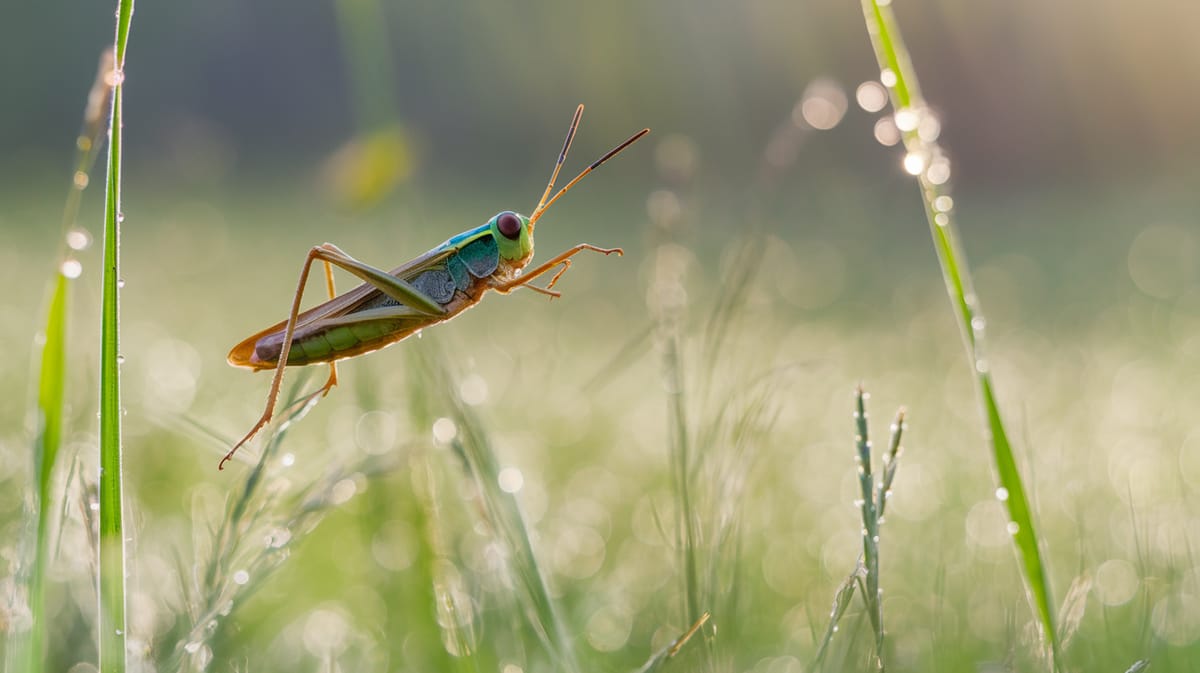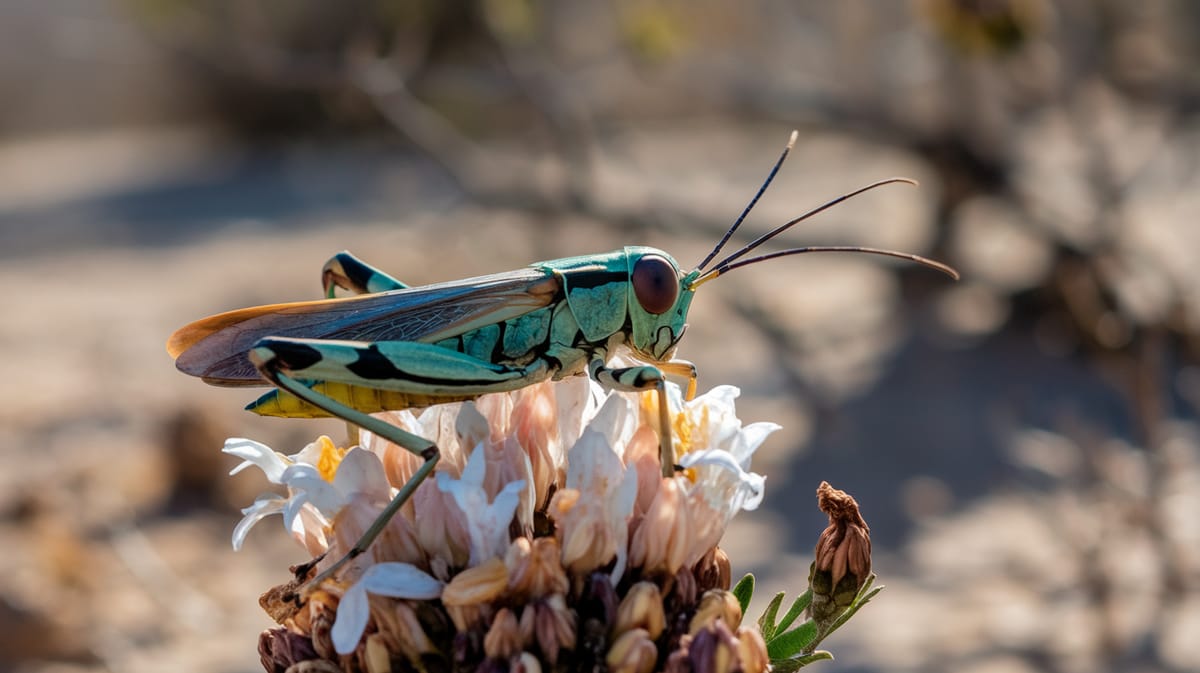Common Froghopper
Expert jumper with extraordinary strength, the Common Froghopper catapults itself up to 100 times its body length. Its foam nests protect young from predators and dehydration.

Key Insights at a Glance
Did You Know?
Taxonomy & Classification
Common Froghoppers exhibit incredible jumping abilities, covering distances hundreds of times their body length. Their streamlined bodies and specialized hind legs illustrate an evolutionary marvel. Let's understand the evolutionary journey and classification of these remarkable herbivores.
Global Presence
Found across Europe, Asia, and North America, Common Froghoppers thrive in diverse habitats, highlighting their adaptability.
Evolutionary Adaptations
Evolving in the Cretaceous period, Froghoppers developed unique jumping mechanisms, crucial for escaping predators and dispersing across landscapes.
Lifecycle and Growth
A remarkable journey of transformation from Egg Stage to Adult Stage.
Egg Stage
Eggs are laid in plant tissues, protected by frothy spittle that aids in moisture retention and predator deterrence.
Nymph Stage
Nymphs feed on plant sap, developing gradually through several molts, and create spittle masses for camouflage.
Adult Stage
Adults are agile jumpers, using their strong hind legs to escape threats while feeding and reproducing on host plants.
Dietary Habits
A sap-sucking insect with specialized mouthparts, this bug feeds primarily on plant sap, using its impressive jumping ability to evade threats.
| DIET TYPE | DESCRIPTION |
|---|---|
| Primary Diet | Primarily consumes plant sap, extracting nutrients from grasses and deciduous trees using its piercing-sucking mouthparts. |
| Secondary Diet | Occasionally feeds on other plant fluids and juices, especially during periods of high population density. |
| Occasional | Rarely resorts to feeding on small, soft-bodied insects, typically when plant resources are scarce. |

Behaviour and Adaptations
Discover the fascinating adaptations that make the Common Froghopper a unique marvel of nature.
Jumping Power
Capable of jumping over 100 times its body length.
Fluid-Sucking Efficiency
Specializes in extracting plant sap using specialized mouthparts.
Camouflage
Blends into plant surfaces to evade predators.
Ecosystem Impact
Common Froghoppers play a crucial role in maintaining ecological balance through their interactions within the ecosystem.
Nutrient Cycling
Facilitates nutrient distribution by feeding on plant sap and excreting honeydew, enriching the soil.
Food Source
Serves as prey for birds and small mammals, supporting various predators.
Pollination Assistance
Aids in the pollination process by transferring pollen grains while feeding.
Conservation Challenges
Understanding and addressing the major threats to Common Froghopper populations.
Habitat Loss
Urbanization and agriculture reduce froghopper habitats drastically.
Chemical Exposure
Pesticides and fertilizers harm froghopper health and reproduction.
Climate Change
Altered weather patterns affect froghopper life cycles and food availability.
Frequently Asked Questions
How long do Common Froghopper live?
Common Froghoppers typically live for about one year. Their life cycle includes egg, nymph, and adult stages. Eggs hatch in spring, and nymphs reach adulthood by summer. Adults then lay eggs in late summer or early fall, completing their life cycle.
What do Common Froghopper eat?
Common Froghoppers feed on plant sap. They use their specialized mouthparts to pierce plant stems and suck the sap, which provides them with necessary nutrients. They are especially known for feeding on grasses and other herbaceous plants.
Are Common Froghopper poisonous?
Common Froghoppers are not poisonous to humans or pets. While their feeding can sometimes harm plants by reducing nutrient availability, they do not pose any direct toxic threat to animals or people.
Are Common Froghopper endangered?
Common Froghoppers are not considered endangered. They are widespread and found in various habitats across Europe and parts of Asia. They are adaptable insects and have stable populations in their natural range.
What do Common Froghopper symbolize?
In some cultures, froghoppers symbolize resilience and adaptability due to their impressive ability to jump long distances. They might also represent a connection to nature and the cycle of life, given their role in ecosystems.
Do Common Froghopper bite?
Common Froghoppers do not bite humans. Their mouthparts are adapted for feeding on plant sap, not for biting or stinging other creatures. They pose no threat to humans in terms of biting.
What color are Common Froghopper?
Common Froghoppers are typically brown or gray, often with mottled or patterned markings. This coloration helps them blend into their surroundings, providing camouflage against predators in their natural habitats.
Does a Common Froghopper have wings?
Yes, Common Froghoppers have wings. They possess two pairs of wings, with the front pair being more substantial and protective. These wings enable them to make their characteristic long jumps and to fly short distances.
What does a Common Froghopper look like?
Common Froghoppers are small, stout insects, about 5-7 mm long. They have a wedge-shaped body, large hind legs for jumping, and two pairs of wings. Their coloration usually includes browns and grays with possible patterns for camouflage.
Is a Common Froghopper an insect?
Yes, a Common Froghopper is an insect. It belongs to the order Hemiptera, commonly known as true bugs. This classification includes various species characterized by their piercing-sucking mouthparts used for feeding on plant juices.
Related Insects
Discover insects with similar characteristics to Common Froghopper - including shared habitats, diets, and taxonomic classifications
Share this profile
Help others discover Common Froghopper
